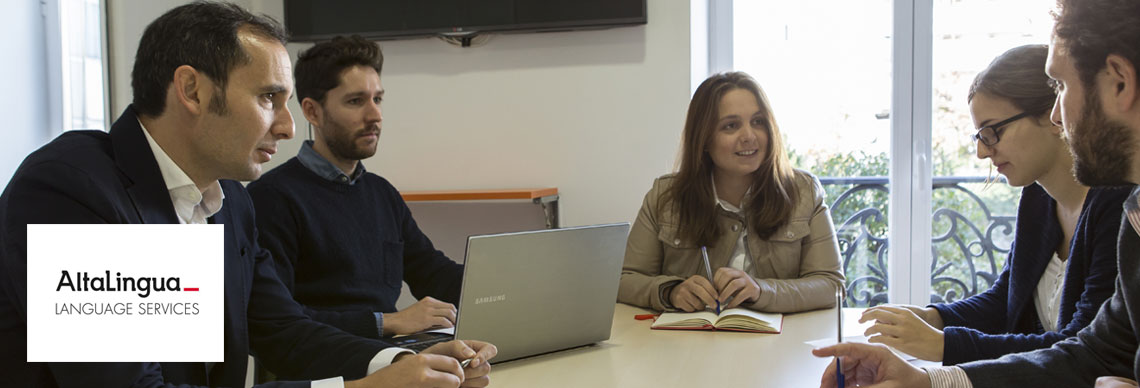LIAISON INTERPRETING
Request a quote for liaison interpreting.
No-strings interpretation quote. Send the characteristics of the event to us through the Quote Request form or by e-mail to interpretaciones@altalingua.es so that we can offer you the most competitive quote.

In liaison or accompanying interpreting, interpreters accompany one or several people or even small groups that do not speak the same language, in order to facilitate mutual understanding. This type of interpreting shares numerous features with consecutive interpreting, to the extent that it is often considered as a subcategory of the latter. However it is different as it does not involve note-taking and it is a two-way process. As such, liaison interpreting does not require such a thorough preparation from the professional compared to other types of interpreting. However, excellent language proficiency in both working languages is essential. The aim is to guarantee spontaneous and fluent communication, adapted to the situation, in which the most appropriate vocabulary is employed. Moreover, it is essential in liaison interpreting to guarantee a top notch dialogue, to do so the interpreter has to ensure that all parties understand the message. That is why non-verbal language is particularly important, as are the capacity to actively listen and carry out cultural adaptations in order to improve understanding. AltaLingua has a team of native professionals, with a wide experience in liaison interpreting, which is a key element to guarantee high quality results.

Liaison, bilateral or accompanying interpreting
Liaison, bilateral or accompanying interpreting is used in very small debate groups, commercial and touristic visits, exhibition and factory visits, tours of plants and other facilities, training courses and more.
To summarise, the main features of liaison interpreting are:
- The interpreter intervenes immediately after the speaker to facilitate mutual understanding between parties.
- No need to note-take and it is a two-way process.
- No need for technical equipment.
AltaLingua has a team of professional interpreters in order to achieve the best territorial coverage throughout Spain at the best price for every language.
What is liaison interpreting?
Liaison interpreting is a type of liaison interpreting in which the professional interpreter accompanies a person or a small group of people on a visit for the whole day and usually needs to move around a trade fair or attend several business meetings.
Accompanying interpreting can be provided for a small group of people.
The accompanying interpreting technique is usually consecutive or whispered interpreting, and can often be supported by a portable interpreting system for simultaneous interpreting to speed up a speech.
What is the price of liaison interpreting?
The rate to be applied will depend mainly on:
- Working languages
- Time and working day
- Location and availability of interpreters
Liaison interpreters have the same skills as the other interpreting techniques and are trained and experienced in each technique.
Request a quote for liaison interpreting.
No-strings interpretation quote. Send the characteristics of the event to us through the Quote Request form or by e-mail to interpretaciones@altalingua.es so that we can offer you the most competitive quote.
About AltaLingua
AltaLingua is the leading company in the translation and interpreting sector. We work with companies all over the world and offer a large variety of language combinations and a great flexibility in translation and interpreting.
Our team includes native interpreters, who guarantee high quality in their interpretations according to every project’s requirements.
AltaLingua has been offering simultaneous, consecutive, liaison and certified interpretation services for more than 15 years. Also, AltaLingua has implemented Quality Management Systems based on Standards ISO 9001:2015, ISO 18587:2020 and UNE-EN 17100:2015.